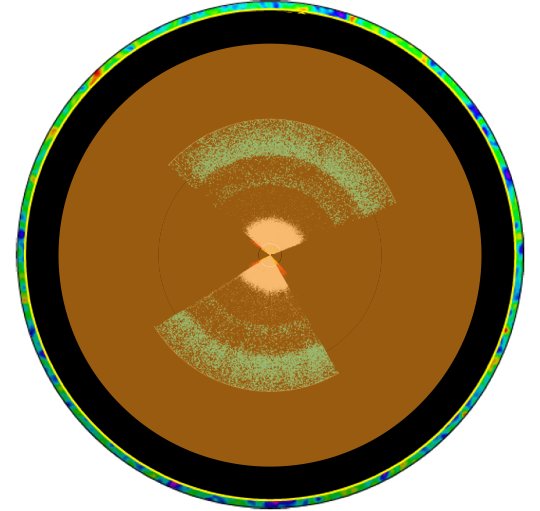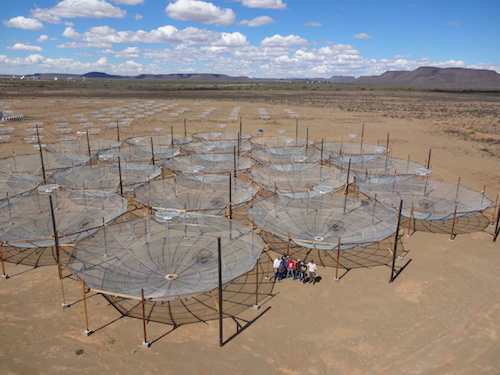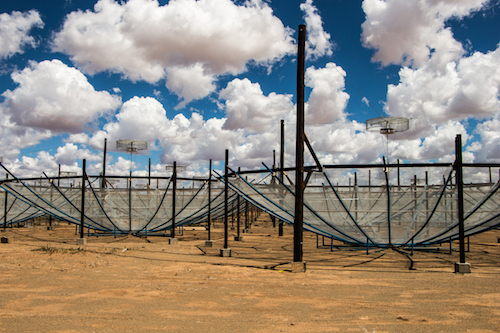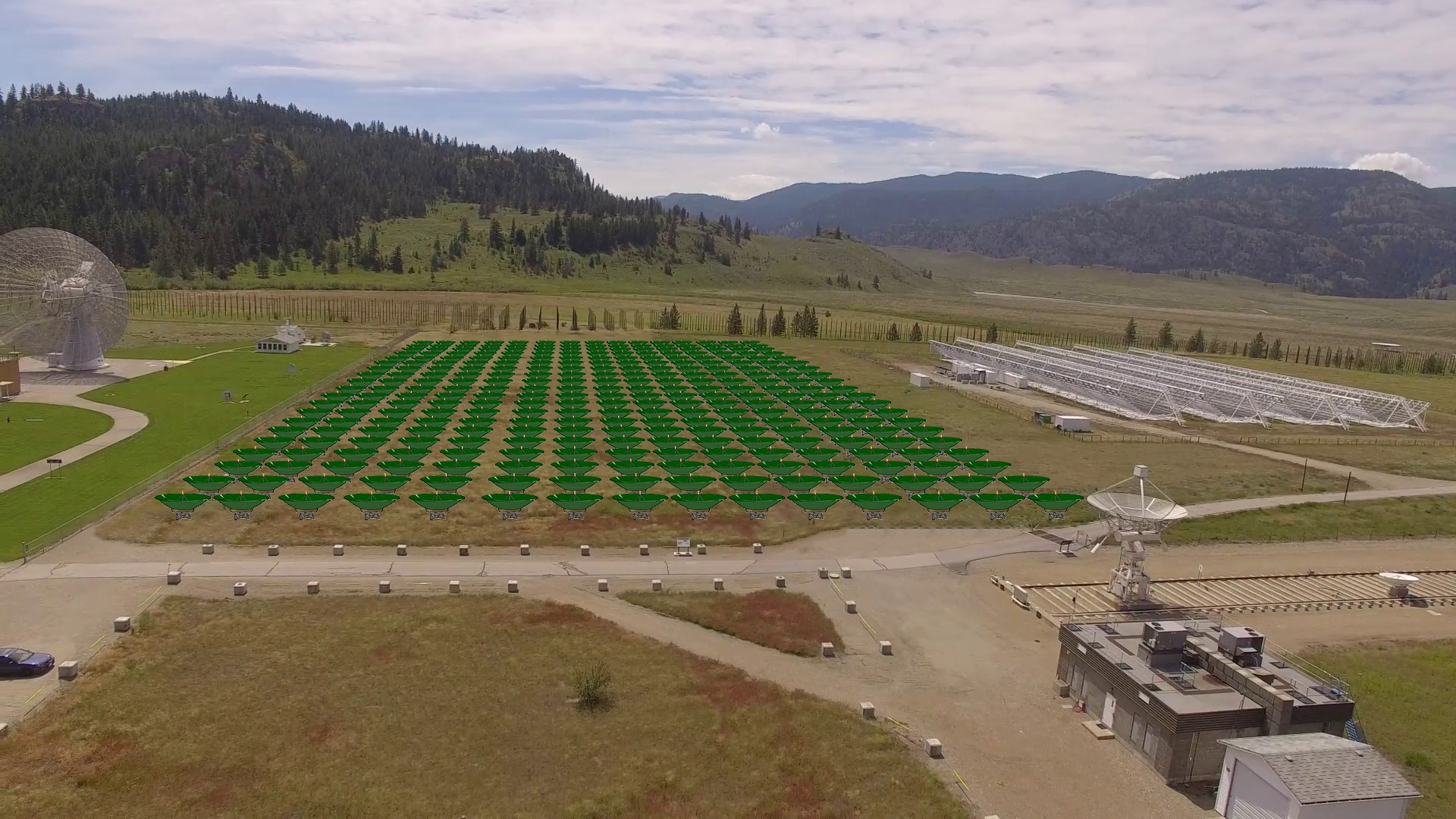Research
Surveying our Universe with neutral hydrogen


The vast majority of our Universe's volume remains unexplored. The image on the left shows the extent of our observable Universe, drawn to scale with us at the centre of the circle looking radially outwards. Shown in colour are the portions that have been systematically surveyed, typically using the Cosmic Microwave Background (greenish outer shell), galaxy surveys (white cone-shaped regions), and quasar surveys (turquoise dots). However, most of our Universe remains unexplored. In 21cm cosmology, we aim to change this by mapping out the distribution of hydrogen in our cosmos. The potential reach of this technique is vast---with the second image we see in orange how much of the observable Universe we can "see" by looking at neutral hydrogen.
Although such an ambitious program will take decades to complete using multiple instruments, there are plenty of questions for us to tackle now. For one, what does one do with such a vast map of our Universe? In a sense, our Universe provides us with the ultimate data science problem. With datasets from 21cm cosmology projected to contain a thousand times the information content of previous cosmological probes, how do we squeeze every bit of information out of our surveys? For instance, can we combine 21cm surveys with other cosmological probes to understand fundamental properties of our Universe like the masses of the neutrinos? (Spoiler: we can!) Can machine learning help us get around contaminants that we might otherwise ruin our images? (Spoiler: we can!)
Understanding the first stars and galaxies using HERA



A prime application of 21cm mapping is to use it to make direct observations of our Universe during Cosmic Dawn---the as-yet unexplored portion of our cosmic timeline when the first generation of stars and galaxies were formed. Prof. Adrian Liu is a founding member of the Hydrogen Epoch of Reionization Array (HERA) collaboration. HERA is a low-frequency radio interferometer being constructed in the South African Karoo desert.
With HERA, we aim to make direct observations of the intergalactic medium during cosmic dawn. This will enable us to understand key properties of the first galaxies. For instance, were first-generation galaxies similar to the galaxies that we see today, in terms of their masses and luminosities in UV and X-rays? Or were they substantially different? How did these galaxies form? And when they formed, how did they affect their surroundings? These questions all feed into the larger goal of understanding galaxy formation. We work towards this goal by establishing the connections between observations, data analysis, and theory within HERA.
Surveying the late universe with CHORD

The story of mapping our Universe using the 21cm line continues after Cosmic Dawn. In the late universe, neutral hydrogen is found in galaxies. Conversely, surveying our Universe during that epoch allows us to make maps of how galaxies are distributed. We aim to do so with the Canadian Hydrogen Observatory and Radio-transient Detector (CHORD). An artist's conception is shown above, with CHORD in green. CHORD will take science-grade data during the mid-2020s.
Late-universe CHORD maps will in principle shed light on the mystery of dark energy by making precise measurements of our Universe's expansion. It will also impact the problem of galaxy formation by making direct observations of hydrogen-rich galaxies. Our mission is to turn this theoretical promise into observational reality by establishing the theory and data analysis frameworks for the interpretation of future CHORD data.
